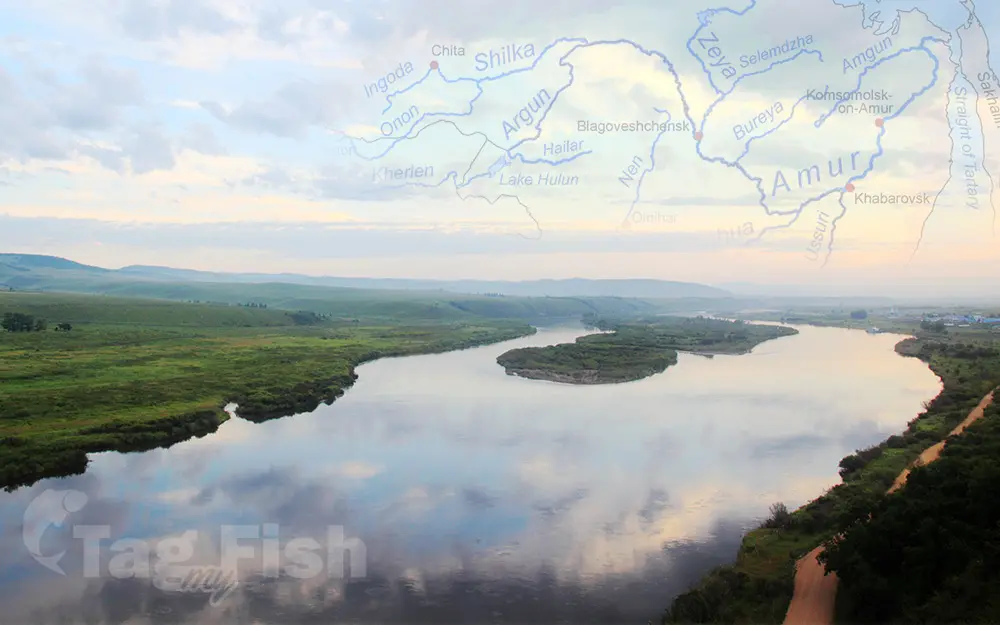Argun river

General data
- Name: Argun river
- Water system: Amur
- Water type: River
- Progression: Amur -> Pacific Ocean -> Planet Earth
- Climates: Continental
- Continents: Asia
- Countries: China, Russia
The Argun or Ergune is a 1,620-kilometre (1,010 mi) long river that forms part of the eastern China–Russia border, together with the Amur (Heilong Jiang). Its upper reaches are known as Hailar River in China. The Argun marks the border (established by the Treaty of Nerchinsk in 1689) between Russia and China for about 944 kilometres (587 mi), until it meets the Amur. Its confluence with the Shilka at Ust-Strelka on the Russian side forms the Amur. The Argun is 1,620 kilometres (1,010 mi) long including its upper course Hailar, and has a drainage basin of 164,000 square kilometres (63,000 sq mi). Its main tributaries are the Urov, Uryumkan and Gazimur from the left, and the Gen He from the right. Kherlen–Argun–Amur In years with high precipitation, the normally exitless Hulun Lake may overflow at its northern shore, and the water will meet the Argun after about 30 kilometres (19 mi). The Kherlen–Argun–Amur system has a total length of 5,052 kilometres (3,139 mi).

 English
English
 Spanish
Spanish
 German
German
 French
French
 Serbian
Serbian
 Russian
Russian

